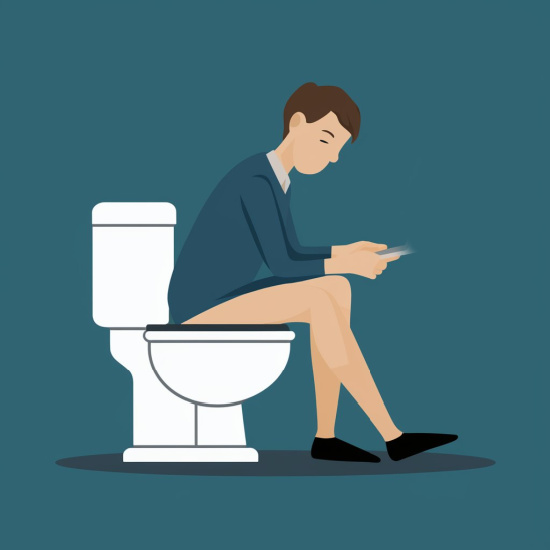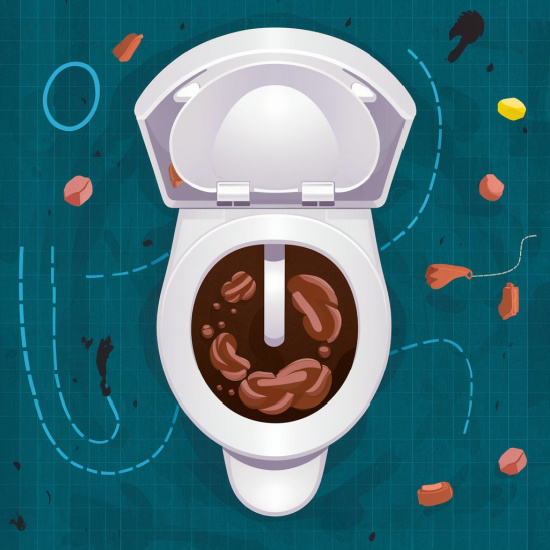Is Your Poop Normal? What It Says About Your Health

Let’s talk about something we all do but rarely discuss: poop.
Yep, you heard me right. Your poop can reveal a lot about your health, and it’s time to start paying attention.
Grab a seat (pun intended), and let’s dive into the nitty-gritty of what the appearance of your poop can tell you about what’s going on inside your body.
We’ll cover what normal poop looks like, what different colors can indicate, and what the shape reveals about your health.
Make sure you stay to the end for our recommendation to help your digestive system work properly and your poop looking normal.
Oh—and no BS. We promise!
What Normal Poop Looks Like

First things first, let’s establish what “normal” poop should look like.
It might not be the most glamorous topic, but knowing what’s typical can help you spot potential issues early.
- Color: Normal poop is usually a medium to dark brown. This color comes from bile, a fluid your liver produces to digest fats.
- Shape and Size: Ideally, your poop should be log-shaped and soft, similar to a smooth sausage. It should be easy to pass without straining.
- Consistency: A healthy stool is generally somewhere between firm and soft. It shouldn’t be too hard or too mushy.
- Frequency: Most people poop anywhere from three times a day to three times a week. What’s important is the regularity and ease of passing stools.
If your poop fits these criteria, your digestive system is likely working reasonably well.
But if you notice significant changes, it might be time to dig a little deeper (not literally, of course).
What Poop Color Reveals
The color of your poop can provide some pretty nifty clues about your health.
Here’s a quick rundown of what different colors might indicate:
- Brown: As mentioned, brown is the standard color for poop, thanks to bile.
- Green: Green poop can occur if you’re eating lots of green vegetables or foods with green food coloring. It can also happen if food moves through your digestive system too quickly, such as when you have diarrhea.
- Yellow: Yellow, greasy, and foul-smelling poop might indicate excess fat, which could be due to gallbladder issues or a malabsorption disorder like celiac disease.
- Black: Black poop can be alarming. It might be caused by certain foods or supplements (like iron), but it could also indicate bleeding in the upper gastrointestinal tract. If you see black poop, especially if it looks like tar, be sure to contact a healthcare provider.
- Red: Bright red poop can be caused by eating red-colored foods or could signal bleeding in the lower gastrointestinal tract, such as from hemorrhoids or diverticulitis. Occasional blood from hemorrhoids may not be a big deal, but go in for an exam if the blood occurs frequently.
- White or Clay-Colored: Pale poop can suggest a lack of bile, which might indicate a problem with your liver or bile ducts.
Remember, occasional changes in color aren’t usually a big deal, but consistent changes should be checked out by a doctor.
What the Shape Reveals

The shape and texture of your poop can also tell you a lot about your digestive health.
Here’s what to look for:
- Smooth and Sausage-Like: This is the gold standard of poop shapes. It means your diet is likely well-balanced and your digestive system is functioning smoothly.
- Lumpy and Sausage-Like: If your poop is lumpy and sausage-shaped, you might need more fiber and water in your diet. This could be a sign of mild constipation.
- Soft Blobs with Clear-Cut Edges: This is still considered normal, especially if you pass stools multiple times a day. It indicates a healthy diet with sufficient fiber.
- Soft and Sticks to the Side of the Toilet: If your poop is sticky and hard to flush, it might suggest too much oil in your diet. This could be due to malabsorption issues where your body isn’t absorbing fats properly.
- Liquid: Diarrhea is often a sign that something has irritated your digestive system. It could be a temporary issue, like a stomach bug, or a sign of a more chronic condition like irritable bowel syndrome (IBS) or Crohn’s disease.
- Hard Pellets: Little hard pellets are a sign of constipation. You probably need more fiber, water, and exercise to get things moving smoothly.
How to Improve Your Digestive Health
Do you struggle with bloating, gas, constipation, diarrhea, or digestive discomfort?
If you have any of these things, this is a sure sign your digestive system isn’t working properly and that it needs some immediate help.
You could literally be carrying around several pounds of toxic waste in your colon.
This waste can provide food for harmful bacteria that can lead to serious infections and diseases like IBS and leaky gut.
But by using a simple yet powerful dietary supplement containing all-natural ingredients, you can clear out that toxic waste and start to have healthy poop again!
This digestive formula contains proven ingredients including psyllium, aloe vera, and probiotic bacteria.
It also contains Bentonite Clay, which is a natural substance that literally absorbs toxins so they can be flushed out of your body.




